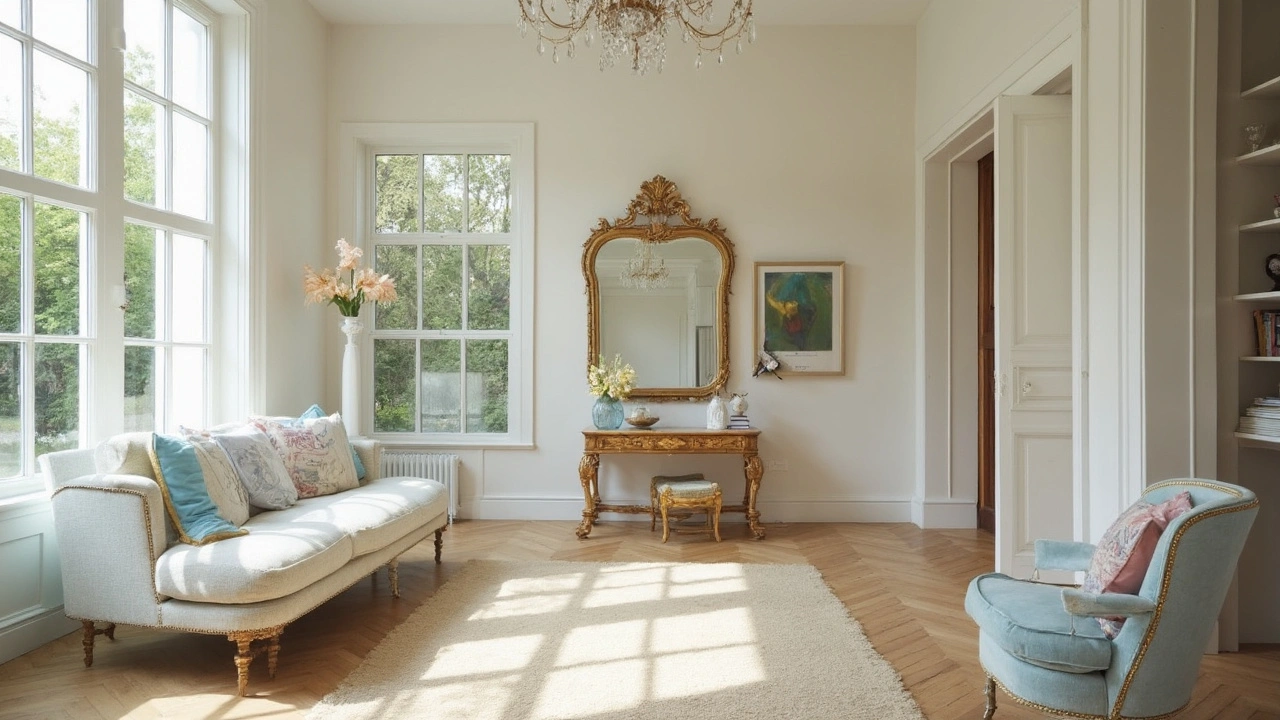Ornate Furniture: How to Spot, Care for, and Use Decorative Pieces
Ornate furniture grabs attention — carved legs, gilded accents, inlaid wood. But how do you tell a real antique from a good copy, care for delicate finishes, or fit a baroque armoire into a modern apartment? This page gives you clear, useful steps so you can buy, protect, and enjoy ornate pieces without guesswork.
How to spot authentic ornate furniture
Look at the wood and joinery first. Old pieces often use walnut, mahogany or oak and show hand-cut dovetails in drawers. Machine-made, perfectly even dovetails point to later manufacture. Check carvings: real hand carving has small irregularities; copied pieces look too perfect. Gilding that shows thin layers and wear in expected places (edges, corners) is a good sign of age.
Study motifs and proportions. Baroque and Rococo favor heavy scrolls, acanthus leaves, and dramatic curves. Renaissance Revival borrows classical columns and pediments; Gothic Revival uses pointed arches and tracery. If a chair or chest matches the shapes from styles you’ve seen in our Baroque, Renaissance Revival, or Gothic Revival posts, that helps confirm its origin.
Smell and finish matter. Old shellac has a warm, nutty scent; modern lacquer smells chemical. Check the underside and back for tool marks, old labels, or old repairs — these are honest clues about a piece’s history. When in doubt, ask for provenance or a dealer’s report.
Using, restoring, and caring for ornate pieces today
Scale is everything. A large carved sideboard can anchor a living room but will overwhelm a small studio. Pair ornate pieces with plain, modern items to let detail stand out — a carved table with simple chairs, or a gilded mirror above a clean-lined console.
For light cleaning, use a soft brush and a dry microfiber. Avoid harsh chemicals; mild soap and water, applied sparingly, works for most finishes. Waxing with a paste wax once a year protects wood and keeps finishes warm. Don’t sand away old finishes — that destroys value. If gilding or intricate marquetry needs repair, hire a conservator or an experienced restorer rather than DIYing risky fixes.
Where to find pieces: estate sales, trusted auction houses, and specialty dealers beat random marketplaces for quality. When buying online, request detailed photos of joints, undersides, and any labels. Keep humidity around 40–55% and out of direct sunlight to avoid warping and fading.
Want context? Read our articles on Baroque, Beaux-Arts, Byzantine, and Renaissance Revival architecture to see how furniture mirrored building styles. Use those posts to match furniture to interiors, pick authentic details, or plan a tasteful mix of old and new in your home.
Ornate furniture can be practical and beautiful if you pick wisely and care for it properly. Start with verification, scale it to your space, and protect finishes — then enjoy the history sitting in your living room.

Rococo Home Decor: Easy Ways to Bring the Look Into Your Space
This article shows how to easily add Rococo style to any home without making things look old-fashioned or overdone. Learn simple ways to choose colors, find the right furniture, and add playful details, even on a budget. Get practical tips on mixing Rococo pieces with your everyday stuff and making those bold elements fit your space. With tricks for shopping vintage and adding small touches, you'll see how to make Rococo style feel fresh and modern in real life.
Read more